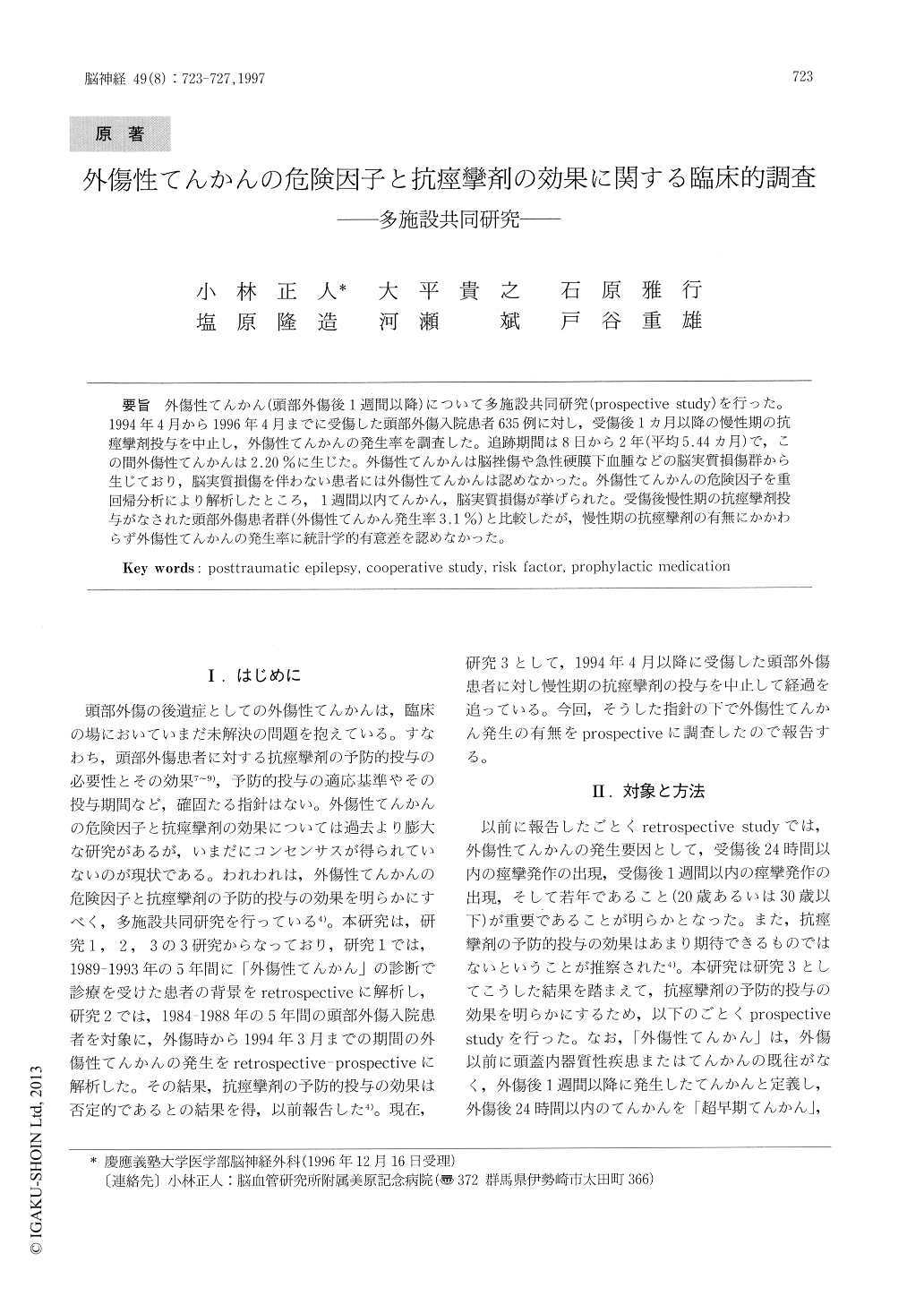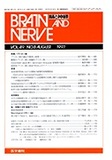Japanese
English
- 有料閲覧
- Abstract 文献概要
- 1ページ目 Look Inside
外傷性てんかん(頭部外傷後1週間以降)について多施設共同研究(prospective study)を行った。1994年4月から1996年4月までに受傷した頭部外傷入院患者635例に対し,受傷後1カ月以降の慢性期の抗痙攣剤投与を中止し,外傷性てんかんの発生率を調査した。追跡期間は8日から2年(平均5.44カ月)で,この間外傷性てんかんは2.20%に生じた。外傷性てんかんは脳挫傷や急性硬膜下血腫などの脳実質損傷群から生じており,脳実質損傷を伴わない患者には外傷性てんかんは認めなかった。外傷性てんかんの危険因子を重回帰分析により解析したところ,1週間以内てんかん,脳実質損傷が挙げられた。受傷後慢性期の抗痙攣剤投与がなされた頭部外傷患者群(外傷性てんかん発生率3.1%)と比較したが,慢性期の抗痙攣剤の有無にかかわらず外傷性てんかんの発生率に統計学的有意差を認めなかった。
A multicentre cooperative prospective study have been conducted to investigate the factors influencing posttraumatic epilepsy (PTE) and to evaluate the prophylactic effect of anticonvulsants. Since April 1994, patients with head injury have been observed following our protocol as follows ; anticonvulsants are administered only to the patients with brain parenchymal injury for one month just after head trauma and no anticonvulsants are administeredafter one month after trauma to any patients except those with posttraumatic epilepsy (PTE).

Copyright © 1997, Igaku-Shoin Ltd. All rights reserved.


